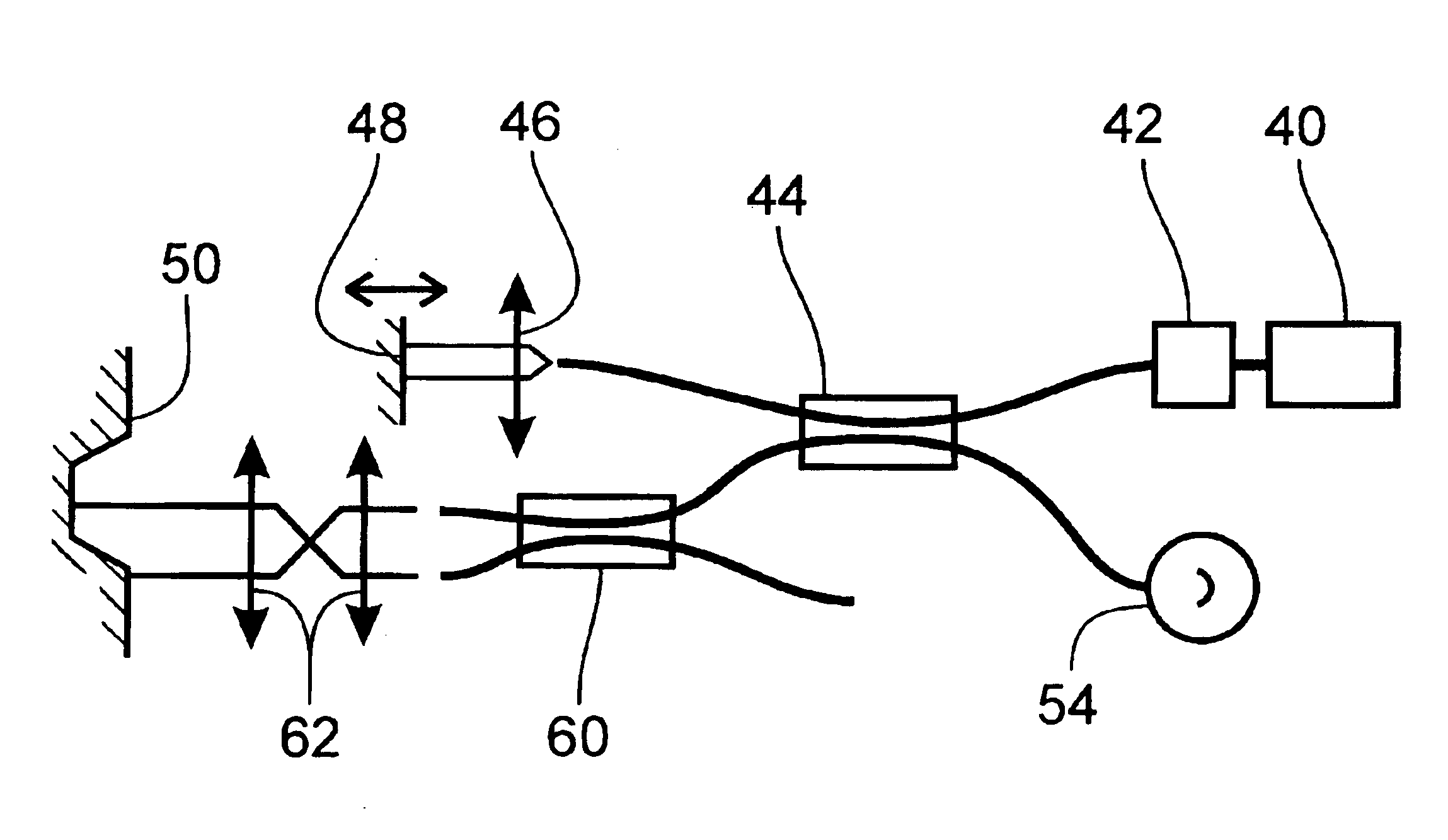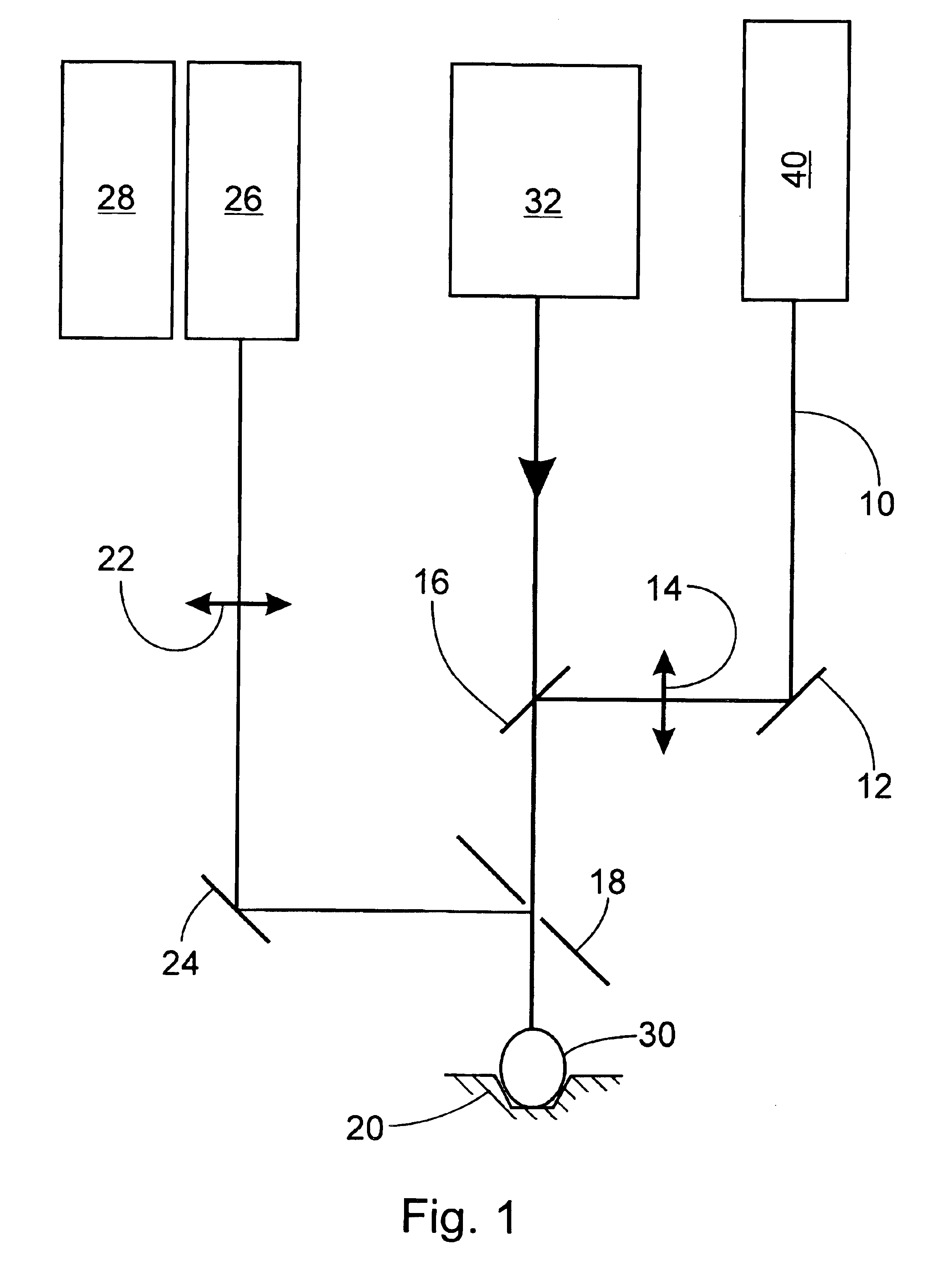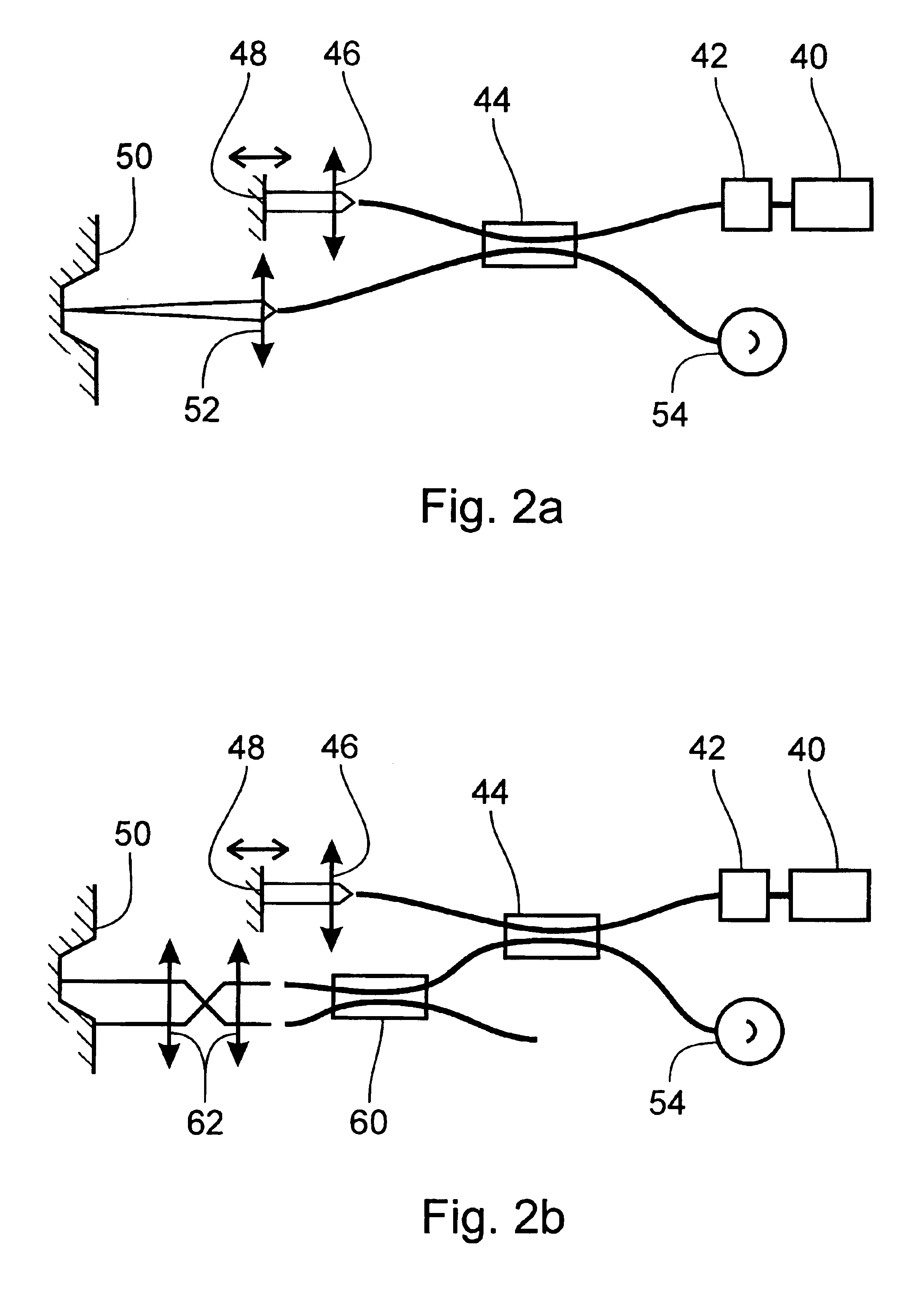Method and apparatus for three-dimensional compositional mapping of heterogeneous materials
a composition mapping and heterogeneous material technology, applied in the field of optical instruments, can solve the problems of poor lateral resolution, time-consuming, and inability to provide accurate spatially resolved analyses, and achieve the effect of rapid and accurate three-dimensional compositional and rapid and accurate compositional depth profiles
- Summary
- Abstract
- Description
- Claims
- Application Information
AI Technical Summary
Benefits of technology
Problems solved by technology
Method used
Image
Examples
Embodiment Construction
In accordance with the principles of the invention, the functions of laser ablative sampling and optical sensing of the sampling position are integrated in a single optical apparatus.
In addition to these two functions, a complete analytical apparatus must also include the means for analysing the composition of the ablated matter. In the LIPS technique, the luminous plasma formed above the specimen surface concomitantly with the ablation event is analysed through optical emission spectrometry. Different elements present in the sample are identified by the emission of characteristic spectral lines at well-known wavelengths. Furthermore, their concentration can be deduced from the spectral line intensity, following calibration using certified standard materials. In general, time gating of the detection device is used so as to eliminate the very intense and less useful continuous and ionic emission of the first instants of the laser-produced plasma. In other techniques, the sample is en...
PUM
 Login to View More
Login to View More Abstract
Description
Claims
Application Information
 Login to View More
Login to View More - R&D
- Intellectual Property
- Life Sciences
- Materials
- Tech Scout
- Unparalleled Data Quality
- Higher Quality Content
- 60% Fewer Hallucinations
Browse by: Latest US Patents, China's latest patents, Technical Efficacy Thesaurus, Application Domain, Technology Topic, Popular Technical Reports.
© 2025 PatSnap. All rights reserved.Legal|Privacy policy|Modern Slavery Act Transparency Statement|Sitemap|About US| Contact US: help@patsnap.com



